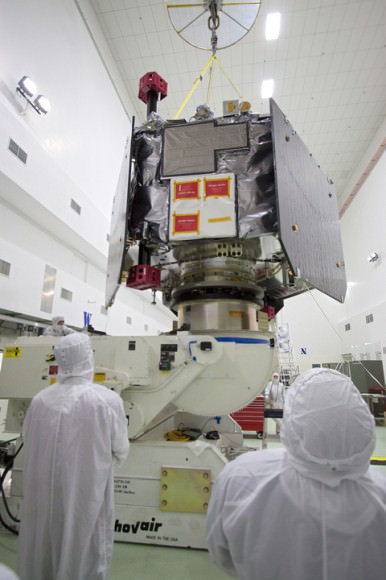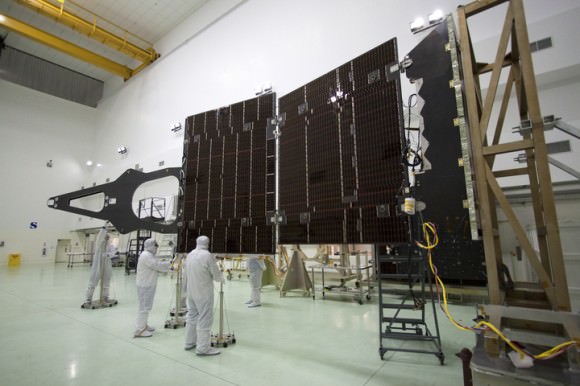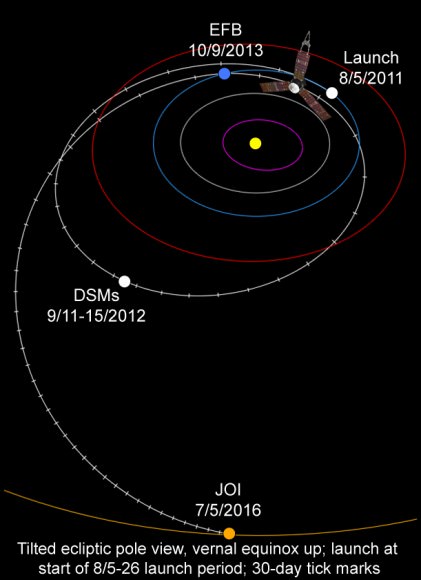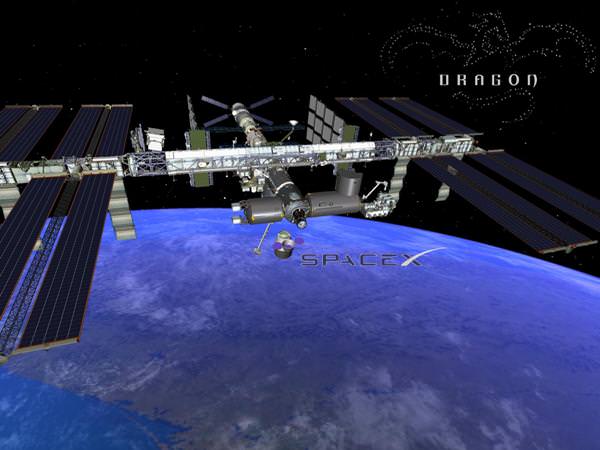Just try to keep up with internet vlogger Hank Green of Vlogbrothers as he explains why he believes NASA is worth every .45 penny of any American’s hard-earned US tax dollar. And believe it or not, this is a video from NASA Television. They really are increasing the awesome.
Several Student-Led Experiments to Fly on Endeavour
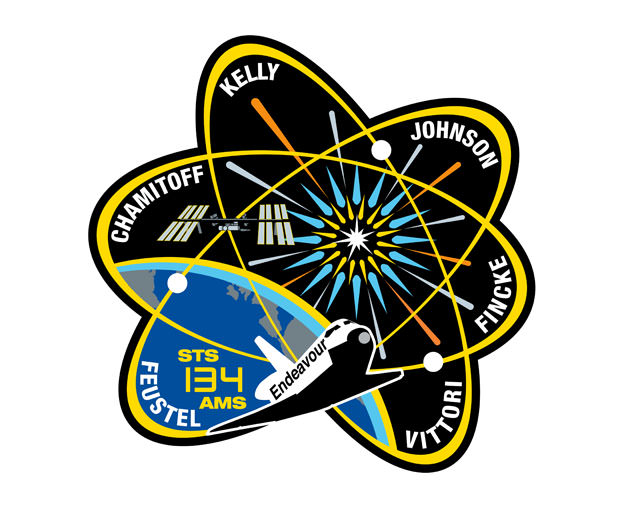
[/caption]CAPE CANAVERAL – STS-134, the final flight of the space shuttle Endeavour – is set to carry several experiments of students from the middle school, high school and collegiate levels. Two of these payloads are sponsored by the NASA Florida Space Grant Consortium.
The first experiment is one that could provide some guidance on future long-duration space flight missions, it deals with seed germination. As missions take astronauts further and further away from Earth, they will need to be able to produce their own food. Learning everything possible about the effects of micro-gravity on seeds therefore is viewed as relevant and important research.
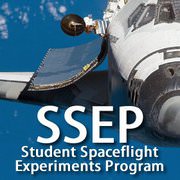
“Crystal Lake Middle Schools’ students and staff members are grateful that the Florida Space Grant Consortium has provided funding that will allow one of our student experiments to fly aboard the Space Shuttle Endeavour in low Earth orbit for 14 days,” said the Magnet Programs Coordinator for Crystal Lake Middle School, Lenecia McCrary. “The students entered a school-wide competition that involved proposing and designing real and practical experiments. The chosen experiment deals with investigating the effects of micro-gravity on apple seed germination.”
A little higher up on the educational ladder is the STEM Bar experiment being flown on STS-134. High school students Mikayla and Shannon Diesch won the 2010 Conrad Foundation Spirit of Innovation Award and will be at the launch watching as Endeavour takes their newly developed STEM Bar to the International Space Station. The STEM Bar was developed using NASA’s food safety standards and certified to fly on STS-134.
Another experiment, one comprised of squid embryos is being spearheaded by the University of Florida and will research the physiological impact of the micro-gravity environment on the animal’s growth and development.
“The Squids in Space project is a cohesive effort in which the full range of NASA Florida Space Grant Consortium supported categories work together on an experiment destined to fly on what will be the last flight of space shuttle Endeavour,” said Florida Space Grant Consortium Director Jaydeep Mukherjee. “This team, which is composed of Florida colleges and high school students and led by University of Florida PhD research scientist Jamie Foster, will connect the three tiers of education in an experiment studying the effects of microgravity on squid embryos.”

The inclusion of these student experiments on board Endeavour is viewed by those sponsoring and supporting these student-led experiments as evidence of NASA’s commitment to educational outreach. NASA has to maximize every square inch of space on the orbiters to stock up the space station for the post-shuttle era. As such, clearing room for these experiments highlights is viewed as an expression of the high value that the space agency places on education. After the launch of Endeavour only a single shuttle flight remains in the program, STS-135 which is slated for liftoff on June 28 on space shuttle Atlantis.
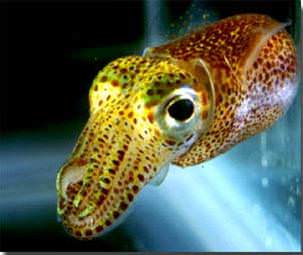
Shuttle Endeavour Will Be Visible Over UK Just After Final Launch
[/caption]
On April 29th, 2011, the space shuttle Endeavour is scheduled to blast off for the last time, delivering the Alpha Magnetic Spectrometer and an ExPRESS Logistics Carrier to the International Space Station.
If you live in the UK you can watch the launch live on NASA TV and a number of other sites on the internet, but that’s not all you can do! You may be able to watch it fly over the UK with your very own eyes about 20 minutes later!
Yes! You can watch the Shuttle fly over the UK roughly 20 minutes after launch (launch time is currently set for 3:47 p.m. EDT – 8:47 p.m. UK Time) if the timing is right and skies are clear. It will be accompanied by its bright orange external fuel tank as it sails across the sky.
I was lucky to see and actually film this in August 2009 with the launch of STS-128 Space Shuttle Discovery.
How to see it? Go outside roughly 15 – 20 minutes after launch and you could see two bright objects similar to what the ISS looks like when it passes over, moving at roughly the same speed. These bright objects in parallel to each other will follow a similar track in the sky to what the ISS does, but it will be the Shuttle Endeavour and its separated external fuel tank!
Hope for clear skies and that the launch isn’t delayed, as this may be our last chance ever of seeing a space shuttle fly over the UK just after launch.
Checkout NASA’s listing of sighting opportunities for your area.
Good luck to the crew of the shuttle and to everyone trying to spot it in the sky on Friday!
Commander Mark Kelly and STS-134 Crew Arrive at Kennedy for Endeavour’s Final Flight
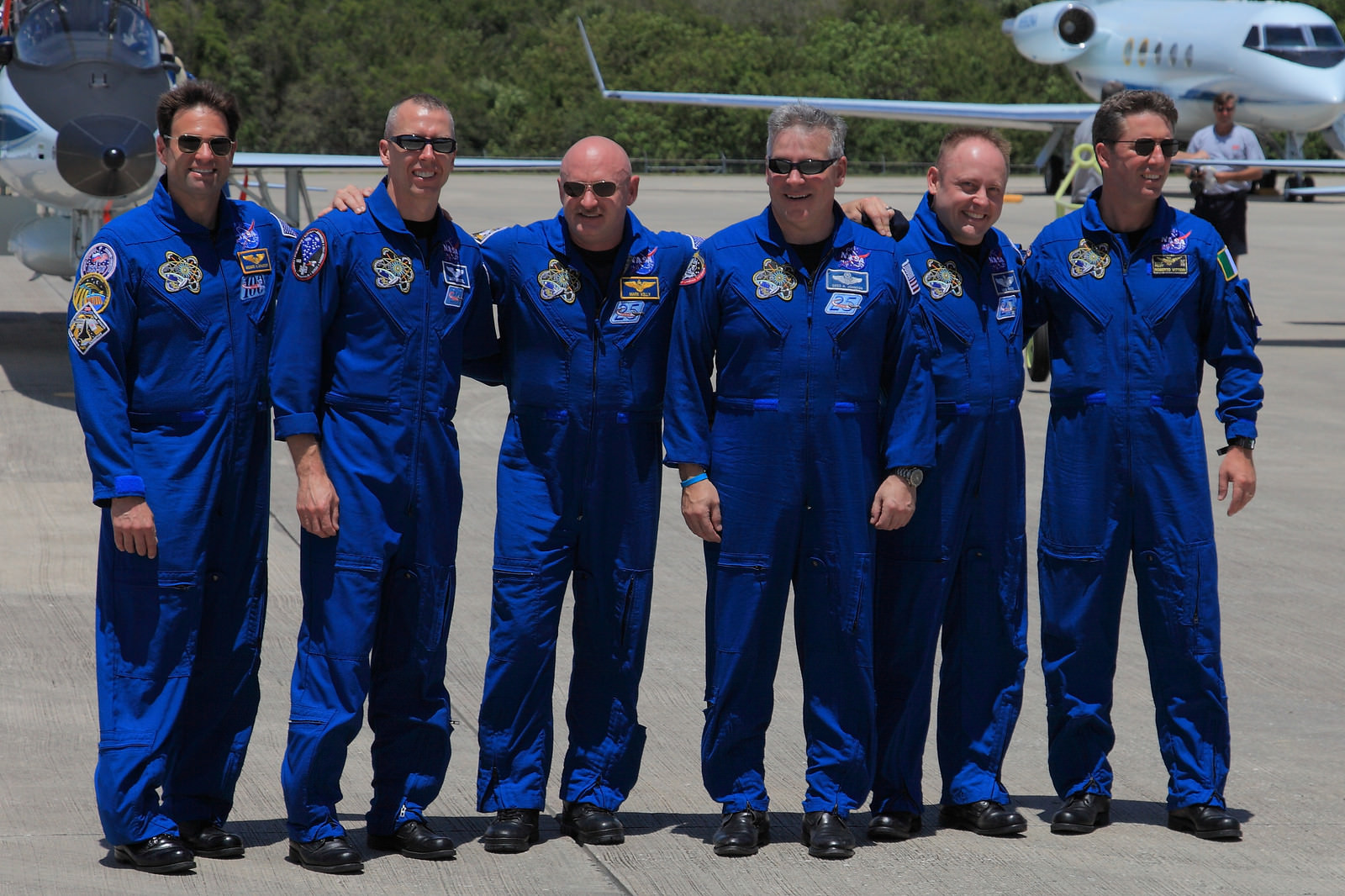
[/caption]
KENNEDY SPACE CENTER – The six man crew for Shuttle Endeavour’s final flight to space arrived today (April 26) at the Kennedy Space Center in Florida. The crew flew in to the Shuttle Landing Facility (SLF) on a quartet of T-38 jets from their training base in Houston.
Shuttle Commander Mark Kelly introduced his crew to a large crowd of gathered reporters, photographers and NASA officials including Launch Director Mike Leinbach, KSC Director Bob Cabana and Kelly’s twin brother Scott who recently returned from a six month stint aboard the International Space Station.
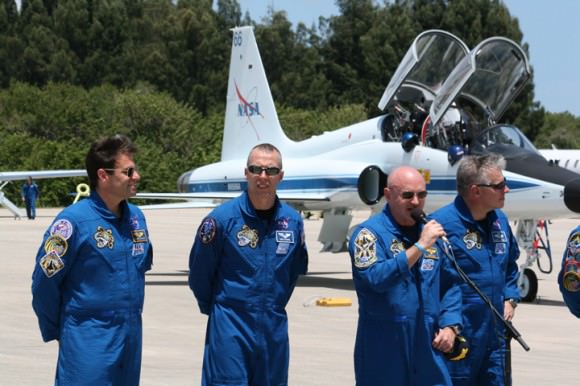
Speaking on behalf of the entire crew he said, “We’re really happy to be here today,” said Kelly. “We got a chance to take look at the orbiter as we first flew over the field and then the over pad. It’s great to see Endeavour all ready to go again.”
Kelly was exuberant in saying that his wife, Congresswoman Gabrielle Giffords, was well enough to attend the STS-134 launch set for Friday, at 3:47 p.m. EDT.
The shuttle launch countdown officially commenced at 2 PM today. The weather outlook is 80% GO, with a 20% chance of weather violations prohibiting launch according to Shuttle weather officer Kathy Winters.
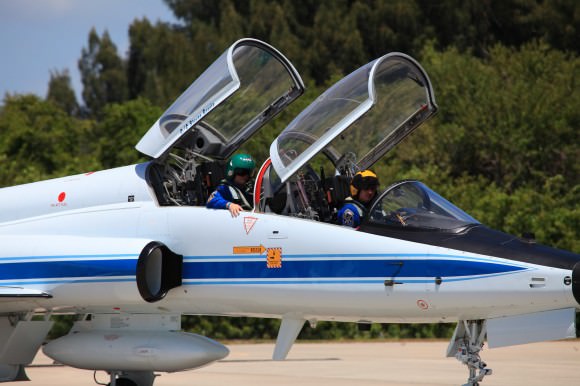
STS-134 is the 25th and final launch of Space Shuttle Endeavour.
The primary payload aboard Endeavour is the $2 Billion Alpha Magnetic Spectrometer (AMS) ) which the crew will attach to the International Space Station. The AMS will collect cosmic rays, search for dark energy, dark matter and anti matter and seeks to determine the origin of the Universe.
Photos from the Universe Today team of Alan Walters, Ken Kremer and Michael Deep. Check back later for more photos
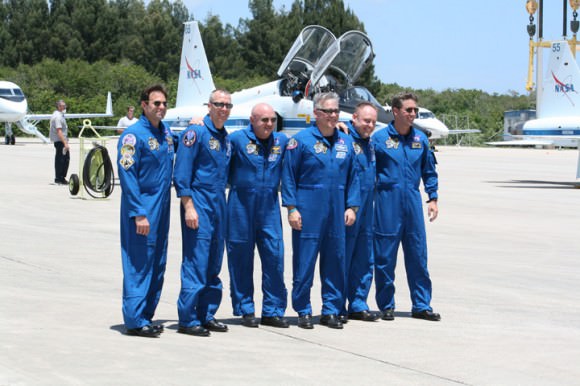
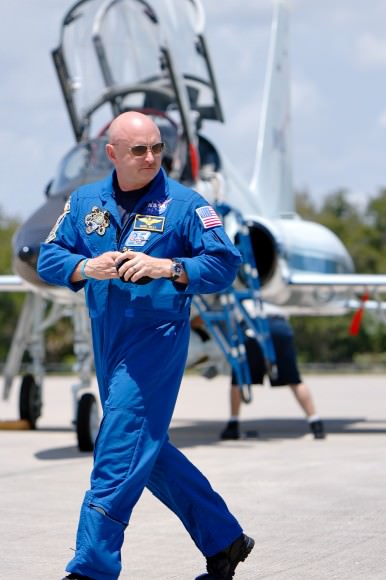
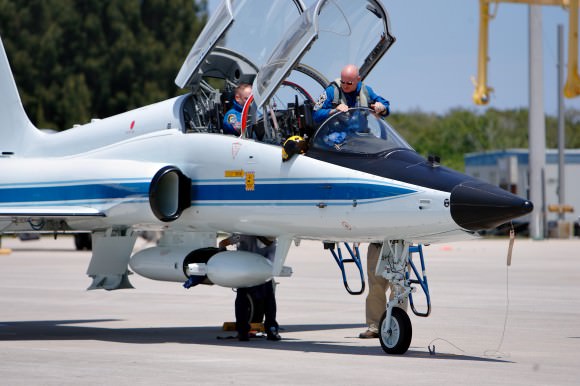
Lockheed Accelerates Orion to Achieve 2013 launch and potential 2016 Manned Lunar Flyby
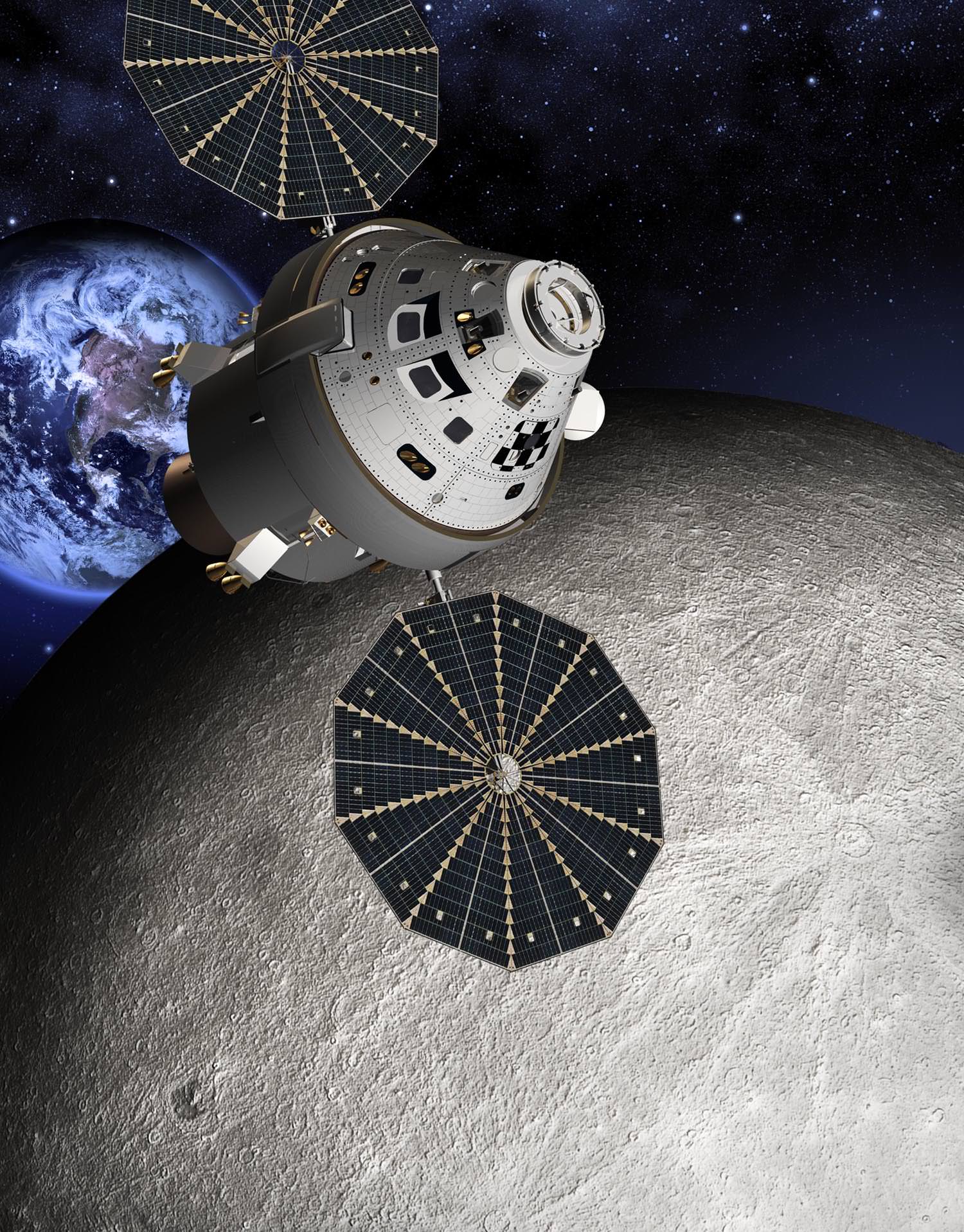
[/caption]
KENNEDY SPACE CENTER – Despite utilizing just half the work force originally planned and cutting back further on the original test program, Lockheed Martin is now accelerating the Orion Multi-Purpose Crew Vehicle (MPCV) launch schedule and aiming to achieve an Earth orbital flight by 2013 and a human crewed flight as early as 2016. The first Orion crew cabin has been built and construction of the second spacecraft has begun.
What’s more is that a bold “manned mission beyond low Earth orbit and even a lunar fly by is possible in 2016 if NASA’s new heavy lift rocket is developed in time,” says John Karas, vice president of Lockheed Martin’s Human Space Flight programs, in an exclusive interview with Universe Today. A bipartisan majority in Congress recently approved funding for the Heavy lift booster and mandated that the first flight occur in 2016.
“In order to go to the moon, we need NASA’s new heavy lifter,” Karas explained. Orion was designed with the capability to fly human crews to low Earth orbit (LEO) and the International Space Station, as well as beyond to deep space, the Moon, Asteroids, Lagrange Points and Mars.
Orion is NASA’s next generation crew vehicle and is intended to someday replace the Space Shuttle program, which will be fully retired just three months from now.
The second to last shuttle flight – STS 134 – is slated for launch this week on April 29 and President Obama and the entire First Family will attend.
Lockheed Martin is the prime contractor for Orion under a multi-year contract awarded by NASA in 2006.
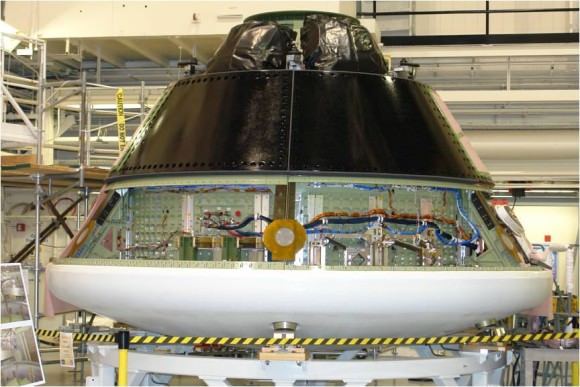
Orion crew module during recent installation of back shell panel at Lockheed Martin’s Vertical Test Facility in Denver, Colorado. Credit: NASA
Karas told me that the streamlined test program would involve flying one Orion mission per year – of increasing complexity – from 2013 to 2016. “Lockheed Martin is working with NASA to determine what are the right launch vehicles and the right missions.”
American astronauts could return to the moon in 5 years after a more than 40 year long hiatus.
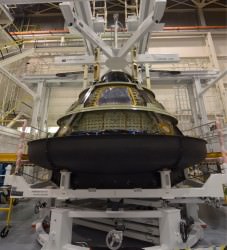
“Right now we are building a brand new crew cabin for the first Orion mission; OFT-1. But everything depends on the budget.”
“For the inaugural Orion test flight in 2013 NASA is considering a Delta IV Heavy booster rocket,” Karas said. “The Atlas V is not powerful enough to send the whole 50,000 pound spacecraft into orbit. With an Atlas we could only launch an Orion crew module. You would have to have delete the Service Module (SM) and /or other subsystems.”
“Orion would be lofted some 7,000 miles out, and then sent back for Earth reentry to simulate something close to lunar velocity, around 80% or so. So we would definitely be testing the deep space environment. Therefore the test flight would be a lot more involved than just a simple Earth orbital reentry.
“For the first Orion mission, we will put as much capability on it as possible depending on the budget,” Karas amplified. “But it’s unlikely to have solar arrays without a few hundred million more bucks. The capability is money limited.”
“The 2014 flight could be a high altitude abort test or perhaps something else.”
“Then a full up unmanned test flight would follow in 2015,” Karas explained.
“If we have a heavy lifter, the 2016 flight with the first human crew could be a deep space mission or a lunar fly by lasting more than a week.”
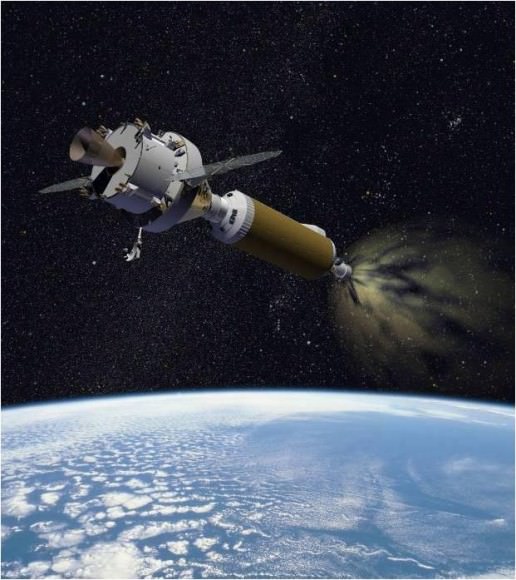
Lockheed has already constructed the initial Orion crew vehicle – known as the first article or Ground Test Article (GTA). The Orion GTA first article was built at NASA’s Michoud Assembly Facility (MAF) in New Orleans, LA where I inspected it after the structural framework was welded into one piece.
Following the installation of mass and volume simulators and a successful series of pressure tests, the first article was then shipped in February this year to the company’s new state-of-the-art Space Operation Simulation Center (SOSC) located in Denver, Colorado.
“At Denver, we are going to finish the assembly of the first article by July of this year so it looks like a spacecraft – adding the doors, windows, thermal tiles and more,” Karas said. “Then it undergoes rigorous acoustics tests until September – known as Shake and Bake – to simulate all aspects of the harsh environment of deep space.”
The next step after that was to send it to NASA Langley for intensive water drop landing tests. But that plan may well change Karas told me.
“The first article – or GTA – is flight worthy. So we don’t want to break the spacecraft during the water landing tests. In the newly revised plan it may be used on the 2nd Orion flight in 2014 instead of reserving it for ground tests only. It would fly with a service module, but not solar panels. The first article could even be the first flight vehicle if the program funding is insufficient.”
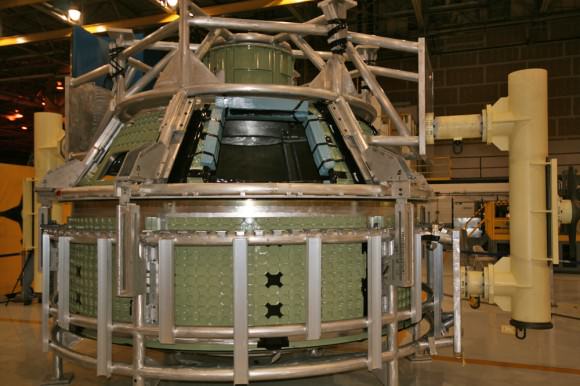
Orion cabin view with astronaut crew hatch and window openings at NASA Michoud Assembly Facility, New Orleans, LA is now undergoing testing and integration at Lockheed’s new state-of-the-art Space Operation Simulation Center (SOSC) in Denver, Colorado. Credit: Ken Kremer
“We have only half the budget for Orion that was planned earlier by NASA,” Karas stated.
“1500 less people are working on Orion since 1 year ago from the start to the end of 2010 – and that number includes all the subcontractors. We had to lay off a lot of people, including some folks we intended to hire.”
“MAF is now focused on building the composite structures of the first Service Module with about 200 people. That’s about half of what should have been about 400 folks. The earlier work at Michoud (MAF) focused on the metallic structures of the cabin for the first article,” said Karas.
To a large degree, launching astronauts to deep space is more a matter of sheer political will power then solving technical issues. And it all comes down to the bucks.
If NASA’s Heavy lifter is not available an alternative scenario with other expendable rockets would have to be developed to achieve the escape velocity required to send a crew of astronauts to the Moon.
Lockheed Martin has independently proposed a stepping stone approach that would send astronauts in Orion spacecraft to challenging deep space targets such as the Moon, and elsewhere such as Asteroids, Lagrange points and Mars that have never been done before and which I’ll feature in upcoming articles.
“Exploration missions that are affordable and sustainable will inevitably lead to technological innovation, to scientific discovery, and to public inspiration and spark an interest in STEM careers that can help the United States counter the overwhelming numerical disadvantage in college graduates it faces in these disciplines in developing third-world nations,’ says Karas.
Read my recent Orion and Shuttle articles:
NASAs First Orion Capsule and New Space Operations Center Unveiled
NASAs First Orion Capsule Ships for Crucial Deep Space Tests
President Obama to Attend Endeavour’s Last Launch on April 29
Shuttle Endeavour Photo Special: On Top of Pad 39A for Final Flight
‘In Flight’ Shuttle Orbiter retirement display planned by Kennedy Space Center Visitor Complex
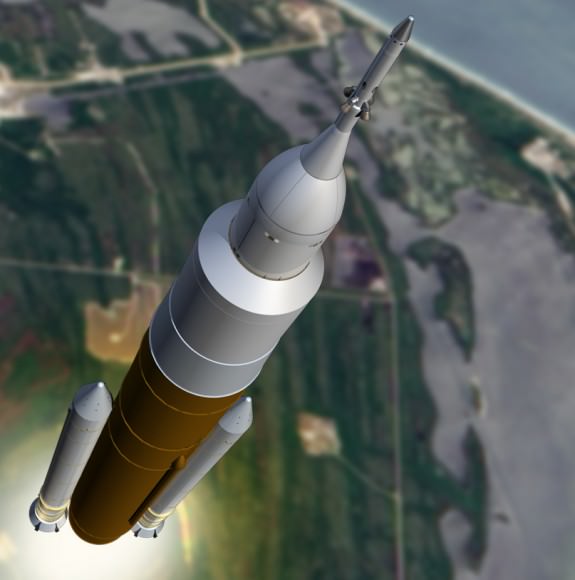
Orion could launch on a lunar flyby mission in 2016 atop NASA’s new Heavy lift booster from the Kennedy Space Center. Credit: Lockheed Martin.
Russia Has Concerns for SpaceX Safety for Docking to ISS
[/caption]
While a test of SpaceX’s Dragon spacecraft docking capabilities with the International Space Station is tentatively scheduled for December, 2011, Russia has said it will not allow a SpaceX vehicle to dock with the ISS unless its safety is fully tested. “We will not issue docking permission unless the necessary level of reliability and safety is proven,” said Alexei Krasov, head of the human spaceflight department of Roscosmos. “So far we have no proof that those spacecraft duly comply with the accepted norms of spaceflight safety.”
NASA has not yet commented on the statement by Krasov, which was reported by the Russian media.
SpaceX has requested NASA to authorize the docking in December after another test flight of the Dragon sometime this summer. As it stands now, approximately twelve cargo resupply flights are planned by SpaceX through 2015, and SpaceX CEO has said he would like to start crewed flights by 2016.
Some critics are viewing Russia’s objections as having little to do with safety and more to do with the monopoly it will have for access to the ISS once the space shuttle program concludes later this summer. Russia has raised its going rates for ferrying US astronauts to the space station on the Soyuz space craft and for bringing cargo with the Progress craft resupply ship.
Source: Space Travel
President Obama to Attend Endeavour’s Last Launch on April 29
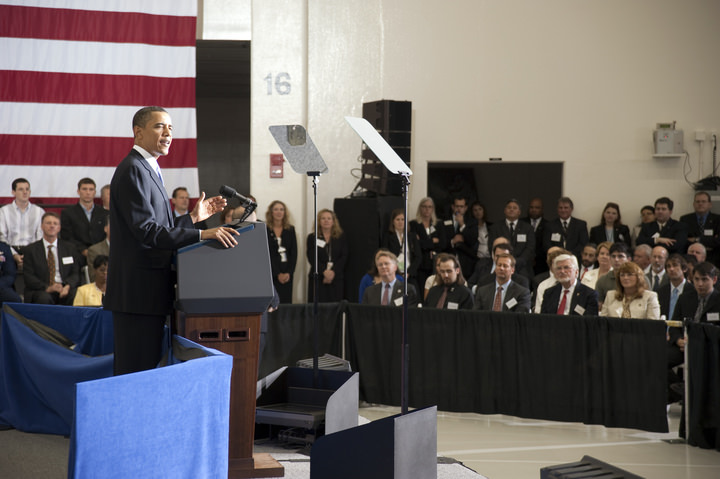
[/caption]
President Barack Obama and the entire First Family apparently plan to attend the final launch of Space Shuttle Endeavour, according to government officials and multiple news outlets. Endeavour is slated to blast off on the STS-134 mission next Friday, April 29 from the Kennedy Space Center (KSC) in Florida at 3:47 p.m. EDT.
There has already been intense drama surrounding the STS-134 mission because it is being commanded by Mark Kelly. Kelly is the husband of U.S. Congresswoman Gabrielle Giffords of Arizona who was critically wounded by gunshots to her head at point blank range during an assassination attempt while attending a meet and greet with her constituents on Jan. 8, 2011. Six people – including a nine year old girl and a federal judge – were killed and a dozen more were wounded that awful day.
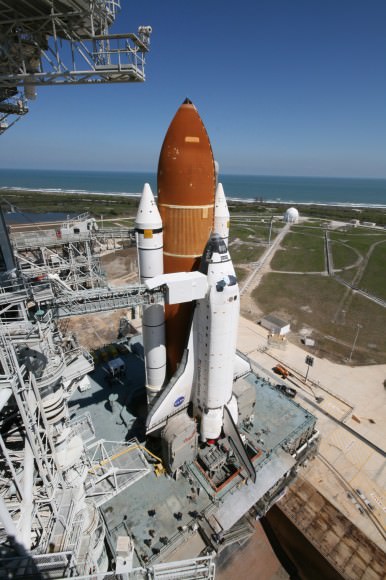
The Presidents appearance at the STS-134 launch will almost certainly lead to skyrocketing interest, but has not yet been officially announced by NASA and the White House. The event is not yet listed on the presidents official schedule.
However, a tweet by the staff of Congresswoman Giffords on her official website states Obama will attend; “We are very happy that Pres. Obama is coming to Mark’s launch! This historic mission will be #Endeavours final flight.”
NASA spokesman Allard Beutel told me today, “I cannot confirm whether the president will be coming to launch next week. If he’s coming, which I can’t confirm, we are a White House agency.”
“We always welcome a visit from the President,” Beutel said.
Security is always tight at KSC during a shuttle launch. A visit by President Obama will certainly lead to even tighter security controls and even more massive traffic jams.
Giant crowds were already expected for this historic final spaceflight of Space Shuttle Endeavour, NASA’s youngest Orbiter, on her 25th mission to space.
Endeavour is carrying the $2 Billion Alpha Magnetic Spectrometer (AMS) ) on a 14-day flight to the International Space Station, a premier science instrument that will collect cosmic rays, search for dark energy, dark matter and anti matter and seeks to determine the origin of the Universe. See my photo below of the AMS from inside the Space Station Processing Facility (SSPF) at KSC with the principal investigator, Nobel Prize winner Prof. Sam Ting of MIT.
NASA Administrator Charles Bolden just announced that Endeavour will be displayed at the California Science Museum following her retirement from active flight service upon landing.
President Obama last visited KSC on April 15, 2010 and gave a major policy speech outlining his radical new human spaceflight goals for NASA. Obama decided to cancel NASA’s Project Constellation ‘Return to the Moon’ Program and the Ares 1 and Ares 5 rockets. He directed NASA to plan a mission for astronauts to visit an Asteroid by 2025 and one of the moons of Mars in the 2030’s. Obama also decided to revive the Orion crew module built by Lockheed Martin, which is now envisaged for missions beyond low earth orbit (LEO), and invest in development of new commercial space taxis such as the Dragon spacecraft by SpaceX for transporting astronaut crews to the ISS.
Spokesman Beutel said that during the April 2010 visit, “The President met with space workers.” He could not comment on details of the president’s plans for the STS-134 visit and said information would have to come from the White House.
The last time a sitting president watched a live human space launch was in 1998 when then President Bill Clinton attended the blastoff of the return to space of Astronaut and Senator John Glenn. Glenn was the first American to orbit the Earth back in 1962. Glenn’s first flight took place a little over a year after the historic first human spaceflight by Soviet Cosmonaut Yuri Gagarin on April 12, 1961- which occurred exactly 50 years ago last week.
Congresswoman Giffords is recovering from her wounds and Shuttle Commander Kelly has said that she would like to attend the STS-134 launch. But no official announcement about her attendance has been made by NASA and depends on many factors including decisions by the doctors treating her in a Houston area hospital.
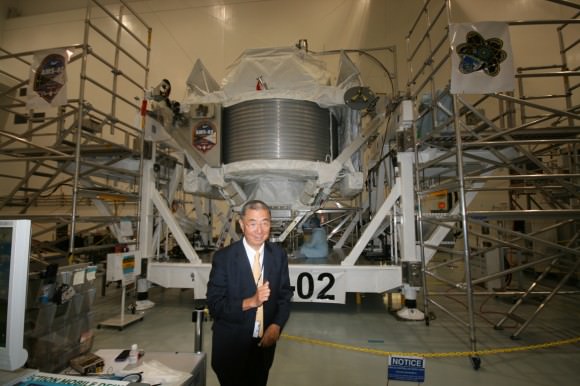
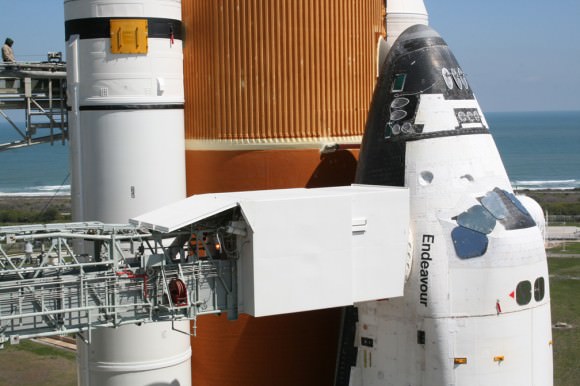
Yuri Gagarin From the Earth to Mars Tribute
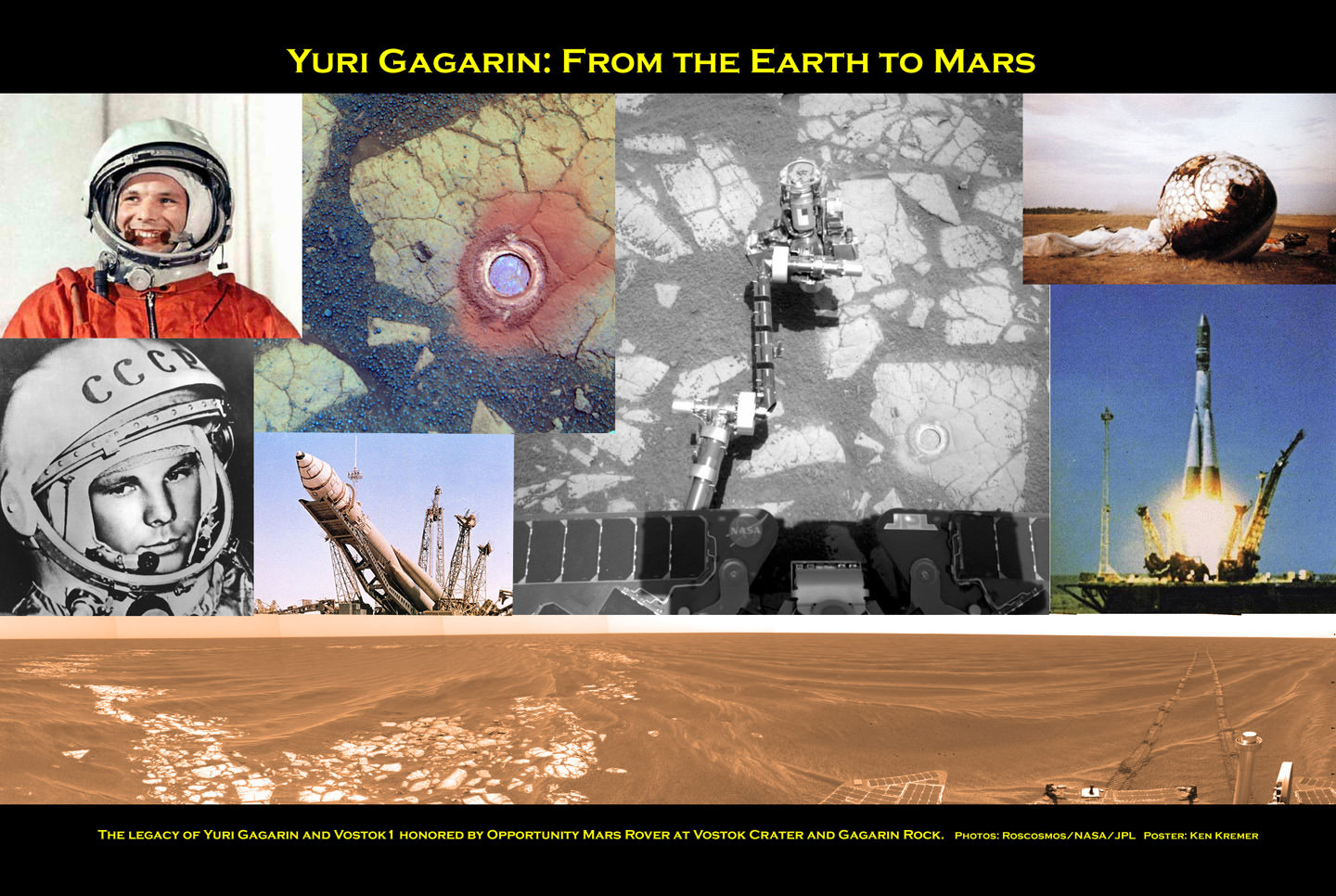
[/caption]
50 Years ago, the dream of human spaceflight opened with the courageous blastoff of Cosmonaut Yuri Gagarin inside the Vostok 1 spacecraft on April 12, 1961. Gagarin was the first person to orbit the Earth. Less than a month later on May 5. 1961, Astronaut Alan Shepard bravely set forth on America’s first human spaceflight – Freedom 7.
Barely three weeks afterward on May 25, 1961, these momentous events of the early Space Age led directly to Project Apollo and the historic announcement by President Kennedy that the United States “would land a man on the moon” by the end of the 1960’s.
In honor of Yuri Gagarin, NASA’s Opportunity Mars Rover explored a small and highly eroded crater dubbed “Vostok Crater” in 2005 during its journey in the Meridian Planum region on the Martian surface. Along the edge of the crater, researchers commanded Opportunity to use the Rock Abrasion Tool (RAT), to drill into a rock dubbed “Gagarin” on Sols 401 and 402 in March 2005.
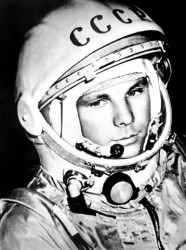
I created the poster collage above as a tribute to the first human spaceflight by Yuri Gagarin and his legacy which eventually led to the exploration of Mars by the Spirit and Opportunity rovers
Opportunity landed on Mars on Jan. 24, 2004 for a planned 90 sol mission. By the time that Opportunity arrived at Vostok Crater, she had already lasted more than 4 times longer than expected and found that water existed on ancient Mars.
Opportunity is still alive today on Sol 2571, more than 28 times beyond its design lifetime !
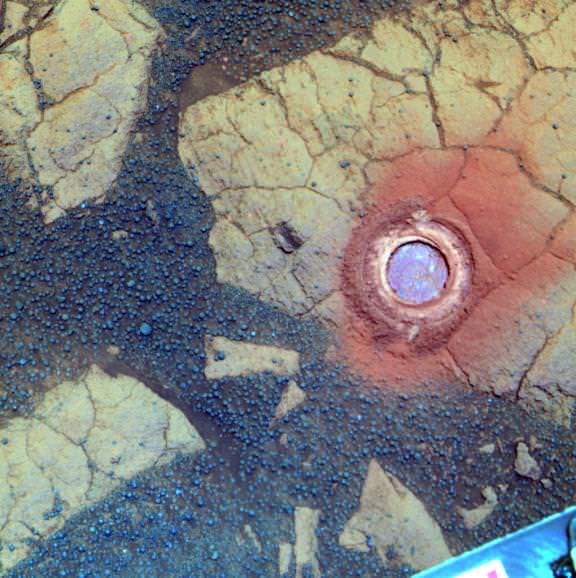
Scientists are using the data gathered from “Gagarin Rock” and other locations explored by Opportunity to help elucidate the history of the past flow of liquid water on the red planet and determine whether the wet environmental conditions could ever have supported martian microbial life – past or present.
“The 50th anniversary of mankind’s first fledgling foray into the cosmos should serve as an important reminder of the spirit of adventure and exploration that has propelled mankind throughout history,” said Mars rover science team member James Rice of NASA Goddard Space Flight Center, Greenbelt, Md, in a statement. “We are a species of explorers; it is encoded into our very DNA.”
“Half a century ago Yuri Gagarin was lofted into a totally unknown, remote and hostile environment and in doing so opened up a new limitless frontier of possibilities for mankind,” Rice added. “A mere 23 days later another brave human, Alan Shepard, climbed aboard a rocket and ventured into the starry abyss. Their courage and vision continue to inspire and lead us into the unknown. Hopefully, one day in the not too distant future it will lead humanity on a voyage to Mars.”
Many people, including myself, were inspired by the Space Race to become scientists and engineers and hope that continues for the next generation of students today.
Read more about Yuri Gagarin and Opportunity in my related stories:
Yuri Gagarin and Vostok 1 Photo Album – 50th Anniversary of Human Spaceflight
Countdown to Yuri’s Night and the 50th Anniversary of Human Spaceflight !
Stirring Video Tributes to Yuri Gagarin
Opportunity Rover Completes Exploration of fascinating Santa Maria Crater
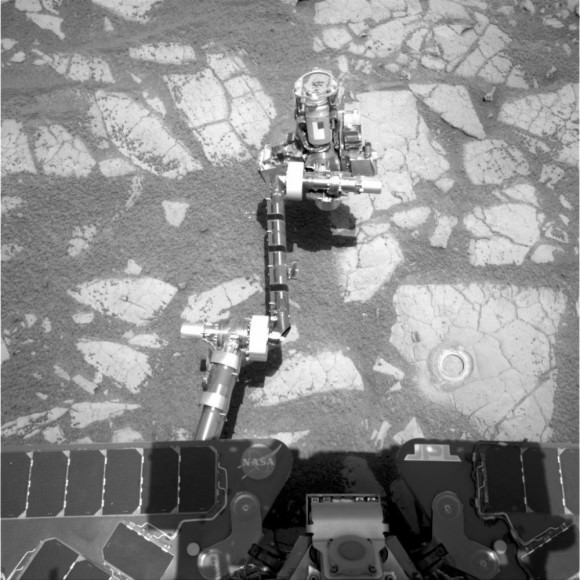
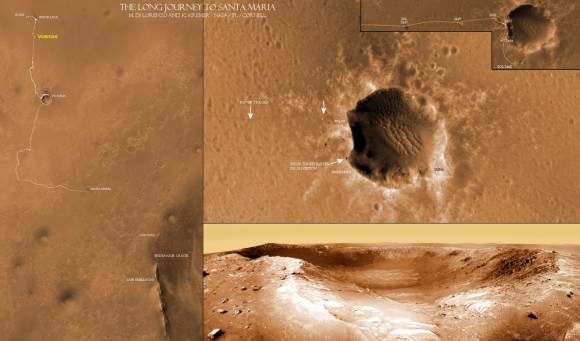
Map shows the long journey of Opportunity spanning the Meridiani Planum region from landing in Jan 2004 to recent stop at Santa Maria crater. Opportunity explored Vostok Crater in March 2005, about 1 year after landing as indicted by marker in yellow. Credit: NASA/JPL/Cornell Marco Di Lorenzo, Kenneth Kremer
NASA Announces Awardees of CCDev2
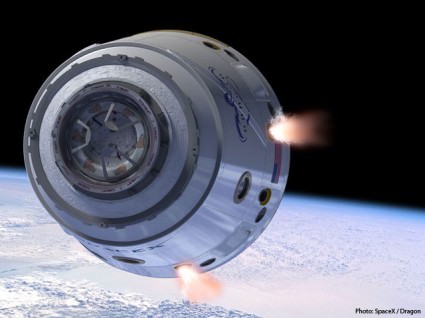
[/caption]
NASA has announced the winners of the four second-round agreements under the Commercial Crew Development (CCDev2) program. These companies will now be awarded between $22 million and $92 million for their proposals. These funds will be used to help the winning commercial firms to develop and improve their concepts for bringing NASA astronauts to space.
These concepts cover both launch vehicles and the spacecraft that ride on them. NASA has selected Blue Origin and granted them $22 million, Sierra Nevada Corporation with $80, Space Exploration Technologies (SpaceX) with $75 million and Boeing with $92.3 million.
SpaceX said via Twitter that they will be ready to fly the first manned mission three years after receiving these new funds.
![SNC_Dream_Chaser_KSC_Launch[1]](https://www.universetoday.com/wp-content/uploads/2011/04/SNC_Dream_Chaser_KSC_Launch1-580x464.jpg)
“The next American-flagged vehicle to carry our astronauts into space is going to be a U.S. commercial provider,” said Ed Mango, NASA’s Commercial Crew Program manager. “The partnerships NASA is forming with industry will support the development of multiple American systems capable of providing future access to low-Earth orbit.”
The CCDev initiative was started back in 2009 with the intent of jump-starting the aerospace community into expanding U.S. spaceflight capabilities. CCDev2 is designed to speed up this process and reduce the gap in the nation’s human spaceflight abilities (when space shuttle Atlantis completes its final mission this summer, the U.S. will essentially lose the ability to send astronauts into orbit).

CCDev2 saw an explosion of proposals for a variety of spacecraft, SpaceX, Orbital Sciences, Boeing, Blue Origin, Alliant Techsystems and Sierra Nevada all submitted ideas. It is hoped that new space markets might arise out of this project which could see an expansion of customers – both commercial and government.
“We’re committed to safely transporting U.S. astronauts on American-made spacecraft and ending the outsourcing of this work to foreign governments,” said NASA Administrator Charles Bolden. “These agreements are significant milestones in NASA’s plans to take advantage of American ingenuity to get to low-Earth orbit, so we can concentrate our resources on deep space exploration.”
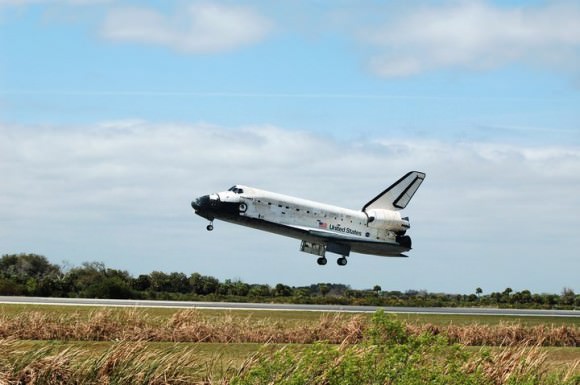
A wide range of both established and new space companies entered submissions. Utah’s Alliant Techsystems (ATK) had proposed Liberty, a partnership between them and the European space company Astrium (the producers of the Ariane rocket). Orbital Sciences entered a mini space shuttle and United Space Alliance (USA) entered a proposal that would have seen the space shuttles Endeavour and Atlantis continue to fly under the rebranded Commercial Space Transportation System.
Solar Powered Jupiter bound JUNO lands at Kennedy Space Center for blastoff
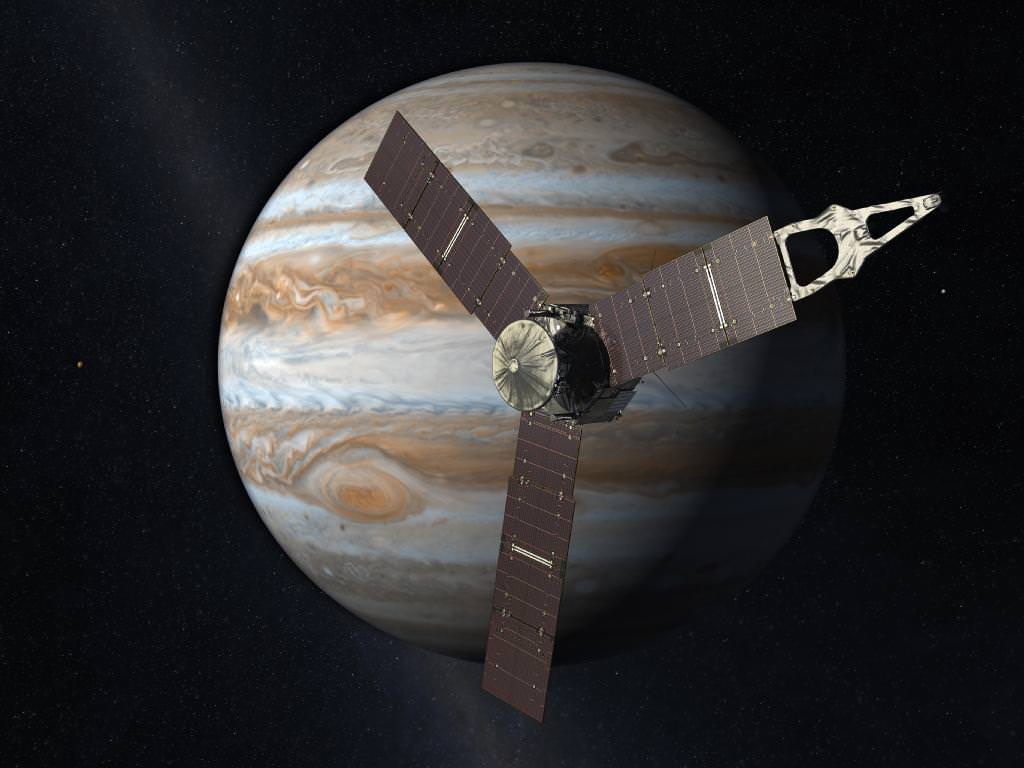
[/caption]
Juno, NASA’s next big mission bound for the outer planets, has arrived at the Kennedy Space Center to kick off the final leg of launch preparations in anticipation of blastoff for Jupiter this summer.
The huge solar-powered Juno spacecraft will skim to within 4800 kilometers (3000 miles) of the cloud tops of Jupiter to study the origin and evolution of our solar system’s largest planet. Understanding the mechanism of how Jupiter formed will lead to a better understanding of the origin of planetary systems around other stars throughout our galaxy.
Juno will be spinning like a windmill as it fly’s in a highly elliptical polar orbit and investigates the gas giant’s origins, structure, atmosphere and magnetosphere with a suite of nine science instruments.
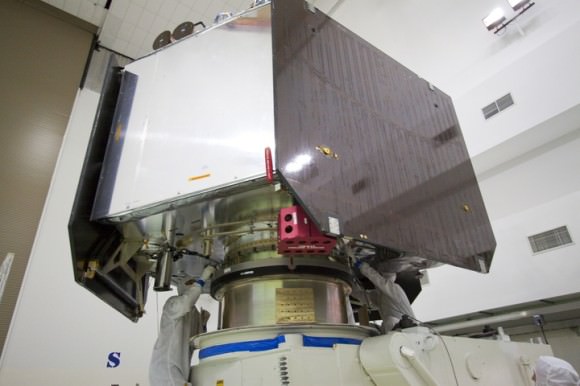
During the five year cruise to Jupiter, the 3,600 kilogram probe will fly by Earth once in 2013 to pick up speed and accelerate Juno past the asteroid belt on its long journey to the Jovian system where it arrives in July 2016.
Juno will orbit Jupiter 33 times and search for the existence of a solid planetary core, map Jupiter’s intense magnetic field, measure the amount of water and ammonia in the deep atmosphere, and observe the planet’s auroras.
The mission will provide the first detailed glimpse of Jupiter’s poles and is set to last approximately one year. The elliptical orbit will allow Juno to avoid most of Jupiter’s harsh radiation regions that can severely damage the spacecraft systems.
Juno was designed and built by Lockheed Martin Space Systems, Denver, and air shipped in a protective shipping container inside the belly of a U.S. Air Force C-17 Globemaster cargo jet to the Astrotech payload processing facility in Titusville, Fla.
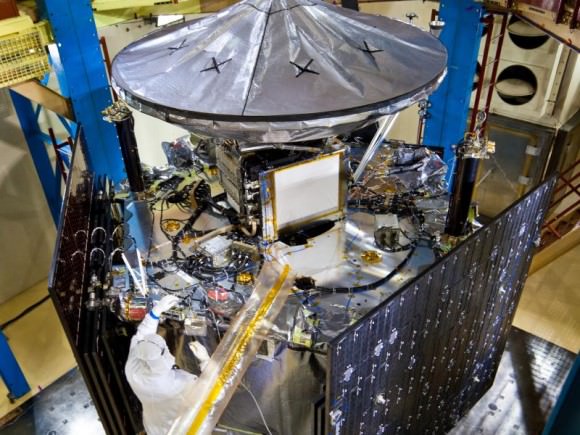
This week the spacecraft begins about four months of final functional testing and integration inside the climate controlled clean room and undergoes a thorough verification that all its systems are healthy. Other processing work before launch includes attachment of the long magnetometer boom and solar arrays which arrived earlier.
Juno is the first solar powered probe to be launched to the outer planets and operate at such a great distance from the sun. Since Jupiter receives 25 times less sunlight than Earth, Juno will carry three giant solar panels, each spanning more than 20 meters (66 feet) in length. They will remain continuously in sunlight from the time they are unfurled after launch through the end of the mission.
“The Juno spacecraft and the team have come a long way since this project was first conceived in 2003,” said Scott Bolton, Juno’s principal investigator, based at Southwest Research Institute in San Antonio, in a statement. “We’re only a few months away from a mission of discovery that could very well rewrite the books on not only how Jupiter was born, but how our solar system came into being.”
Juno is slated to launch aboard the most powerful version of the Atlas V rocket – augmented by 5 solid rocket boosters – from Cape Canaveral, Fla. on August 5. The launch window extends through August 26. Juno is the second mission in NASA’s New Frontiers program.
NASA’s Mars Curiosity Rover will follow Juno to the Atlas launch pad, and is scheduled to liftoff in late November 2011. Read my stories about Curiosity here and here.
Because of cuts to NASA’s budget by politicians in Washington, the long hoped for mission to investigate the Jovian moon Europa may be axed, along with other high priority science missions. Europa may harbor subsurface oceans of liquid water and is a prime target in NASA’s search for life beyond Earth.
